Major themes
- War
- Grief
- Loss
- Friendship
- Death
- Oppression
"The Fly" is a 1922 short story by Katherine Mansfield.
Mansfield wrote the story in February 1922 at the Victoria Palace Hotel in Montparnasse, Paris. It was first published in The Nation and Athenaeum on 18 March 1922 and in The Doves' Nest and Other Stories in 1923. [1]
The story relates to the death of a soldier in World War I. In October 1915, Mansfield's younger brother, Leslie Beauchamp, was killed during a grenade training drill while serving with the British Expeditionary Force in Ypres Salient, Belgium. He was 21. Like the soldier in the story, before enlisting Leslie had worked for his father's firm. Leslie and Mansfield's father Harold Beauchamp owned an importing company. [2]
Mr. Woodifield, an old and rather infirm gentleman, is talking to his friend, referred to only as "the boss". The boss is a well-to-do man who is "still going strong", despite being five years older than Woodifield. The boss enjoys showing off his redecorated office to him, and points out its new furniture and electric heating. There is an aged picture of a young man, whom we learn is the boss's deceased son, sitting above a table, but it is not referred to by the boss.
Woodifield wants to tell the boss something, but is struggling to remember what it is, when the boss offers him some fine whisky. After drinking, his memory is refreshed and Woodifield talks about a recent visit that his two daughters made to his son's war grave in Belgium, saying that they had come across the boss's son's grave as well. The reader now come to know that the boss's son had died in World War I six years ago, a loss that affected the boss heavily.
After Woodifield leaves, the boss sits down at his table to inform his clerk that he does not want to be disturbed. He is extremely perturbed at the sudden reference to his dead son, and expects to weep but is surprised to find that he cannot. He looks at his son's photo, and thinks it bears little resemblance to his son, as he looks stern in the photo, whereas the boss remembers him to be bright and friendly. The boss then notices a fly struggling to get out of the inkpot on his desk. The boss helps it out of the inkpot and observes how it dries itself. When the fly is dry and safe, the boss drops a blob of ink onto it. He admires the fly's courage and drops another dollop of ink. He watches the fly dry itself again, although with less vigor than the first time. By the third drop, the fly has been severely weakened, and dies.
The boss throws the dead fly, along with the blotting paper that was underneath it for his cruel game, into the wastepaper basket. He asks his clerk for fresh blotting paper. The boss suddenly "feels a wretchedness that frightens him and finds himself bereft". He tries to remember what he had been thinking about before noticing the fly, but cannot recall his grieving for his son.

Kathleen Mansfield Murry was a New Zealand writer and critic who was an important figure in the modernist movement. Her works are celebrated across the world, and have been published in 25 languages.
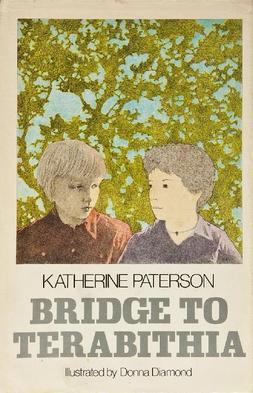
Bridge to Terabithia is a children's novel written by Katherine Paterson; it is about two children named Leslie and Jesse who create a magical forest kingdom in their imaginations. The book was originally published in 1977 by Thomas Crowell, and in 1978, it won the Newbery Medal. Paterson drew inspiration for the novel from a real event that occurred in August 1974 when her son's friend was struck and killed by lightning.

Elizabeth von Arnim, born Mary Annette Beauchamp, was an English novelist. Born in Australia, she married a German aristocrat, and her earliest works are set in Germany. Her first marriage made her Countess von Arnim-Schlagenthin and her second Elizabeth Russell, Countess Russell. After her first husband's death, she had a three-year affair with the writer H. G. Wells, then later married Frank Russell, elder brother of the Nobel prize-winner and philosopher Bertrand Russell. She was a cousin of the New Zealand-born writer Katherine Mansfield. Though known in early life as May, her first book introduced her to readers as Elizabeth, which she eventually became to friends and finally to family. Her writings are ascribed to Elizabeth von Arnim. She used the pseudonym Alice Cholmondeley for only one novel, Christine, published in 1917.

Joseph Leonard Sinnott was an American comic book artist. Working primarily as an inker, Sinnott is best known for his long stint on Marvel Comics' Fantastic Four, from 1965 to 1981, initially over the pencils of Jack Kirby. During his 60 years as a Marvel freelance artist and then remote worker salaried artist, Sinnott inked virtually every major title, with notable runs on The Avengers, The Defenders, and Thor.

John Middleton Murry was an English writer. He was a prolific author, producing more than 60 books and thousands of essays and reviews on literature, social issues, politics, and religion during his lifetime. A prominent critic, Murry is best remembered for his association with Katherine Mansfield, whom he married in 1918 as her second husband, for his friendship with D. H. Lawrence and T. S. Eliot, and for his friendship with Frieda Lawrence. Following Mansfield's death, Murry edited her work.
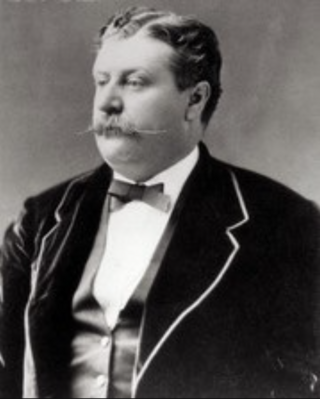
James Fisk Jr., known variously as "Big Jim", "Diamond Jim", and "Jubilee Jim" – was an American stockbroker and corporate executive who has been referred to as one of the "robber barons" of the Gilded Age. Though Fisk was admired by the working class of New York and the Erie Railroad, he achieved much ill-fame for his role in Black Friday in 1869, where he and his partner Jay Gould befriended the unsuspecting President Ulysses S. Grant in an attempt to use the President's good name in a scheme to corner the gold market in New York City. On January 7, 1872, Fisk was assassinated in New York City, in relation to his business dealings.
Samuel Joseph Glanzman was an American comics artist and memoirist. Glanzman is best known for his Charlton Comics series Hercules, about the mythological Greek demigod; his autobiographical war stories about his service aboard the U.S.S. Stevens for DC Comics and Marvel Comics; and the Charlton Comics Fightin' Army feature "The Lonely War of Willy Schultz", a Vietnam War-era serial about a German-American U.S. Army captain during World War II.
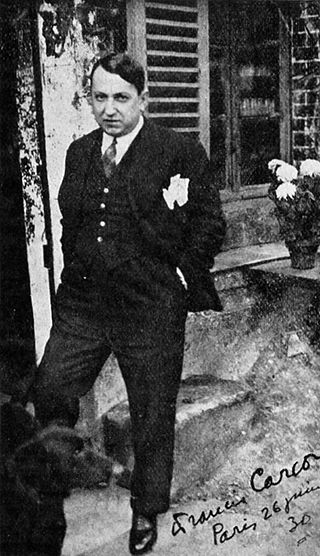
Francis Carco (1886–1958) was a French author, born at Nouméa, New Caledonia. He was a poet, belonging to the Fantaisiste school, a novelist, a dramatist, and art critic for L'Homme libre and Gil Blas. During World War I he became an aviation pilot at Étampes, after studying at the aviation school there. His works are picturesque, painting as they do the street life of Montmartre, and often being written in the argot of Paris. He has been called the "romancier des apaches." His memoir, The Last Bohemia: From Montmartre to the Latin Quarter, contains reminiscences of bohemian life in Paris during the early years of the 20th century.
"A Cup of Tea" is a 1922 short story by Katherine Mansfield. It was first published in The Story-Teller in May 1922. It later appeared in The Doves' Nest and Other Stories (1923). Her short stories first appeared in Melbourne in 1907, but literary fame came to her in London after the publication of a collection of short stories called In a German Pension.
"The Canary" is a short story by Katherine Mansfield. It was first published posthumously in The Nation and Atheneum on 21 April 1923, and later appeared in The Doves' Nest and Other Stories (1923).
"A Dill Pickle" is a 1917 short story by Katherine Mansfield. It was first published in the New Age on 4 October 1917. A revised version later appeared in Bliss and Other Stories. The characters and their relationship possibly were inspired by Mansfield's older sister Vera Margaret Beauchamp and her husband James Mackintosh Bell.
"Je ne parle pas français" is a short story by Katherine Mansfield. She began it at the end of January 1918, and finished it by February 10. It was first published by the Heron Press in early 1920, and an excised version was published in Bliss and Other Stories later that year.
"Mr Reginald Peacock's Day" is a 1920 short story by Katherine Mansfield. It was first published in the New Age on 14 June 1917, and later reprinted in Bliss and Other Stories.
"The Daughters of the Late Colonel" is a 1920 short story by Katherine Mansfield. It was first published in the London Mercury in May 1921, and later reprinted in The Garden Party and Other Stories.
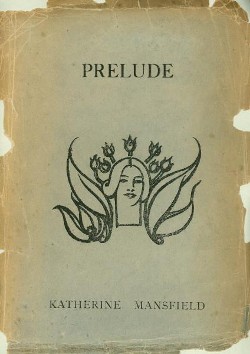
"Prelude" is a short story by Katherine Mansfield. It was first published by the Hogarth Press in July 1918, after Virginia Woolf encouraged her to finish the story. Mansfield had begun writing "Prelude" in the midst of a love affair she had in Paris in 1915. It was reprinted in Bliss and Other Stories (1920). The story was a compressed and subtler version of a longer work The Aloe, which was later published posthumously in full.
"At the Bay" is a 1922 short story by Katherine Mansfield. It was first published in the London Mercury in January 1922 in twelve sections, and later reprinted in The Garden Party and Other Stories (1922) with a short descriptive coda which is now the thirteenth section. The story represents Mansfield’s best mature work, a luminous example of her literary impressionism. While writing it at the Chalet des Sapins in Montana, Switzerland, she was coming to terms with her relationship with her husband John Middleton Murry and with her own origins and identity.
"Something Childish But Very Natural" is a short story written by Katherine Mansfield in 1914. It was first published posthumously in the Adelphi. It was republished in Something Childish and Other Stories (1924).
Robert Bartow Lubbers was an American comic strip and comic book artist best known for his work on such strips as Tarzan, Li'l Abner and Long Sam.
Arthur Beauchamp was a Member of Parliament from New Zealand. He is remembered as the father of Harold Beauchamp, who rose to fame as chairman of the Bank of New Zealand and was the father of writer Katherine Mansfield.
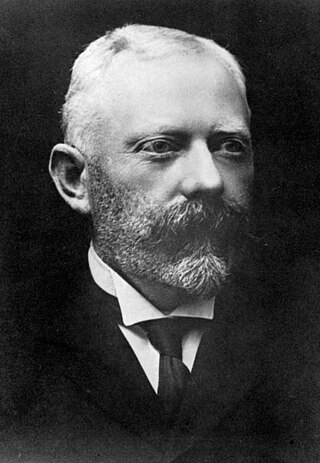
Sir Harold Beauchamp was a New Zealand businessman and later two times chairman of the Bank of New Zealand. He is remembered as the father of author Katherine Mansfield.